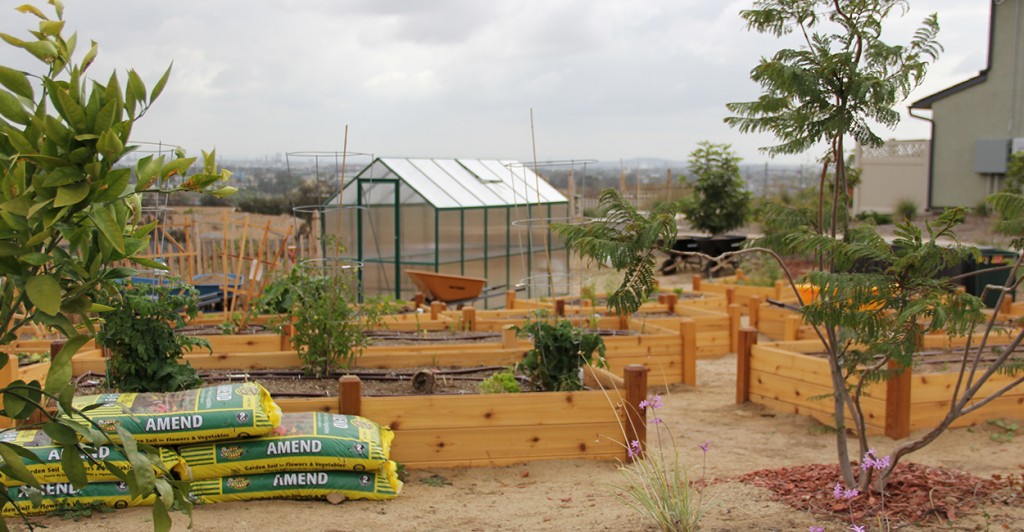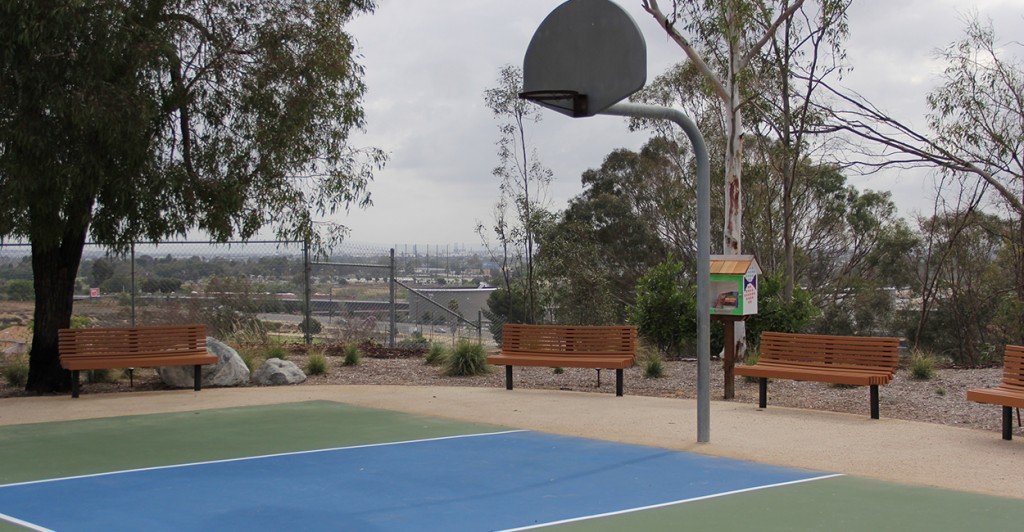SAN PEDRO, Calif.—Thirty minutes south of Los Angeles, nestled into a drought-dry San Pedro hillside, sits the small townhome community of Blue Butterfly Village. Named for sharing land with a preserve for the endangered Palos Verdes blue butterfly, it’s the sort of place you’d never know was there unless you were looking for it. Even then, you may have some trouble.
The women who call Blue Butterfly Village home don’t mind the quiet. They have a noisy past: All are female veterans who have dealt with poverty and homelessness, oftentimes alongside domestic violence, sexual assault, or mental health issues, making up part of what the U.S. Department of Veterans Affairs calls the fastest-growing segment of the country’s homeless population.
“Being here is a really humbling experience,” says Danielle Chavez, an army veteran whose five years of service included stints in Iraq, Germany, and Fort Bragg. “This is like, only in your wildest dreams. You look around and you think, ‘Is this really my backyard?’”
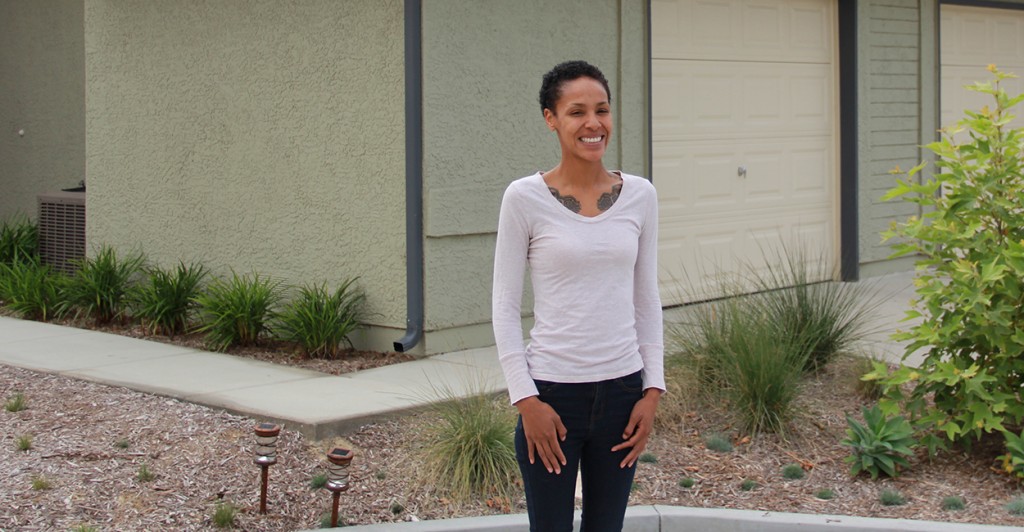
Army veteran Danielle Chavez stands in front of her new home. (Photo: Billy Glading/The Daily Signal)
After returning from Iraq, Chavez lost her mother and faced the dissolution of her marriage around the same time. She became homeless before a VA worker mentioned Blue Butterfly Village, which is owned and operated by the Volunteers of America. She now lives in a bright corner unit on a freshly paved cul-de-sac with her two young daughters, flown in from a relative’s home in Arizona by Volunteers of America.
Chavez, who suffers from PTSD, is one of four women veterans who moved into the 73-unit community last month, representing a small pilot lease group. A ribbon cutting ceremony drew city councilmen, the Los Angeles mayor, and the U.S secretary of Veteran Affairs.
It was an emotional celebration for the trailblazing, female-focused community—one of the first of its kind in the nation.
History Repeats Itself
The land Blue Butterfly Village lies on has ties to the armed services that trace back to the 1940s, when the nearby U.S. Naval Dry Docks—now known as the Long Beach Naval Shipyard—opened. The homes were developed as Navy housing and, when the shipyard closed for good in 1997, were all but abandoned.
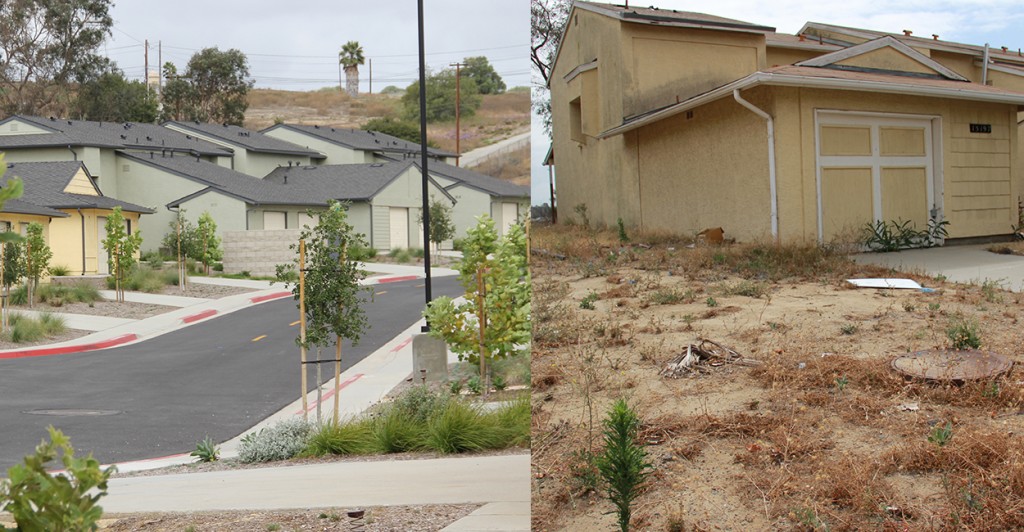
Homes renovated by the VOA (left) stand in stark contrast to untouched units in the community. (Photo: Billy Glading/The Daily Signal)
From there, the neighborhood slowly morphed into a run-down squatter haven, a scene slightly reminiscent of The Walking Dead, until the U.S. Navy deeded the property out at no charge as part of its reuse project. Nine acres went to Volunteers of America. The rest, a majority of the original property, went to nearby schools Marymount California University and Rolling Hills Preparatory School.
Volunteers of America President Robert Pratt had the idea for Blue Butterfly Village back when the organization was originally granted the land, but he swiftly found the project tied up in bureaucracy and paperwork.
In 2011, they finally broke ground on the project, and have since spent $15 million updating the homes.
The group pulled a majority of funding through their tax credit, as well as through various investors and a subsidy through the housing authority via section eight vouchers. That’s according to Shenick Covington, the director of strategic relations for Volunteers of America and Blue Butterfly Village’s property manager. The only fee residents pay is their cable and Internet bill, assigned to them monthly and based on their usage of the neighborhood’s AT&T hub. They’re allowed to stay as long as they need.
In addition to fixing structural and cosmetic flaws like broken windows or chipped paint, Volunteers of America partnered with local non-profit Design by the Heart, which gathered upwards of 50 professional volunteers to design and furnish each unit—and their private backyard patios—individually. The homes come entirely move-in ready, outfitted with everything from silverware to, in some cases, Keurigs or even George Forman grills. Covington also maintains a garage on site that is full of donated items including clothing, furniture, and toys that the women are free to visit and “shop.”
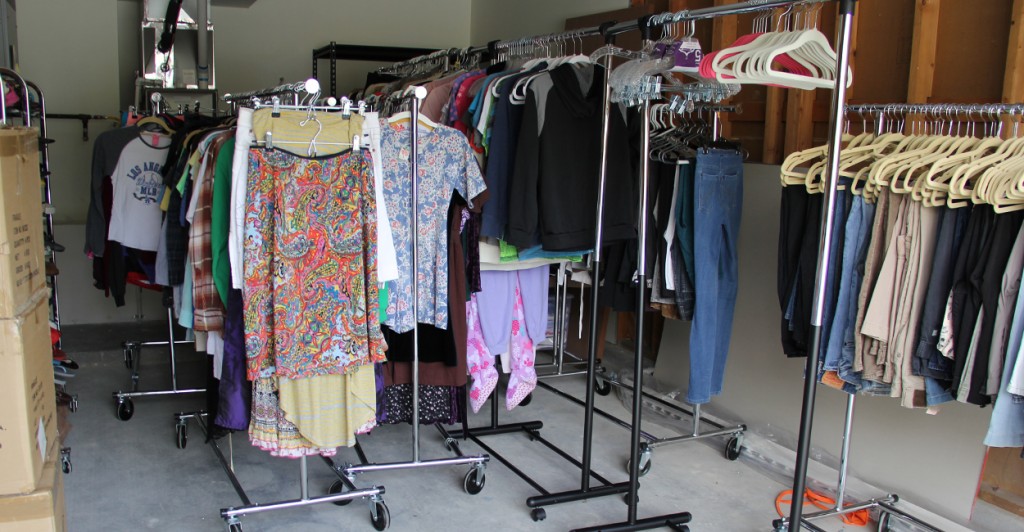
A garage filled with donated items serves as a shopping hub for residents. (Photo: Billy Glading/The Daily Signal)
“We know the challenges with these families,” Covington says. “They may have credit issues … they can’t come up with security deposits, and then when they do, they don’t have anything to really work with upon moving in. So we definitely want to make sure they feel prepared and can come in with their personal items and just get settled.”
Home Depot donated shelving to the homes’ single-car garages and helped landscape the property, which now has a gazebo, community garden, basketball court, two playgrounds, and “mini libraries”—or birdhouses full of books—throughout.
“We go up to the community garden, and it’s just beautiful. The kids think it’s the greatest thing,” Chavez says, referring to the eight total children who live in the community so far. “We take this little back trail, and the kids … they think it’s the nature walk of all nature walks.”
A Place to Call Home
Once Volunteers of America renovated the property, they began recruiting tenants. So far, 61 of the 73 units will be filled with homeless veteran families, who need to be able to provide both proof of an honorable discharge and VASH (Veterans Affairs Supportive Housing) qualification. Volunteers of America is also working closely with the Department of Mental Health to fill the remaining 12 homes with their homeless clients, still with a veteran preference. There is a 3-person minimum to each household, which may be renegotiated to a 2-person minimum depending on need, Covington said.
And while the units are available to male or female head of household, Volunteers of America is also working to get additional preferences in place, such as prioritizing those who have undergone military sexual trauma or domestic violence that would near guarantee a predominantly female head of household community.
“This community [of female veterans] is often overlooked, and that’s what we realized,” Covington says. “Initially, the vision was for women veterans, period, but that’s kind of touchy in terms of fair housing. So that’s why we’re trying to get preferences in place to prioritize this demographic.”
Blue Butterfly Village will offer residents services including counseling, job training, education and child care. It will assist with enrolling community children in a head start preschool program. The village also provides 24-hour security, by way of security guards and 19 video cameras set up throughout the community that are fed straight into a Los Angeles Police Department feed, a welcome addition for women facing PTSD or anxiety and working to adjust back into civilian life.
“If veterans don’t have a [family] support system, it’s actually easy to see how some do or might become homeless,” says Deborah Snyder, founder and CEO of Operation Renewed Hope, a non-profit that works to provide housing for homeless veterans in the Washington, D.C., area. “When you’re on active duty, everything is taken care of for you, including housing. But when you come off of active duty, it’s difficult unless you have a well-paying job. There could be a divorce situation, or a skills translation problem, and medical issues compound everything.”
One of the biggest challenges Volunteers of America has faced with Blue Butterfly Village thus far has been ensuring clients don’t drop out throughout the rigorous application process.
That’s according to Orlando Ward, the executive director of external affairs at Volunteers of America.
“The application process was really, really hard,” says Chavez , the Army veteran. “I was living out of my car, so documents were in my glove compartment, in boxes in the trunk … I would need to track down my social but I wouldn’t even know what happened to it or the last time I saw it.”
At the same time, she acknowledges the benefits that come along with carefully vetting her neighbors: “They make sure they’re thoroughly screening everybody that comes in here,” she says.
A Bright Future
Volunteers of America hopes Blue Butterfly Village might be a model for other communities nationwide, filling a need that’s just beginning to be identified and often goes underreported. That’s because female veterans—who often stay with relatives or, like Chavez, in their cars—frequently don’t get counted in census statistics relating to homelessness. In 2013, according to the Department of Veterans Affairs, 8 percent of homeless veterans were women, or almost 4,500 women nationwide.
“Female veterans do have different issues than male veterans,” says James Carafano, vice president of foreign and defense policy studies at The Heritage Foundation. “We tend to think of veterans’ issues as what the VA is doing, but it’s actually really much more about what people do in communities to support veterans. Adapting those programs for the needs of female veterans is a really key thing.”
Data shows that housing communities like Blue Butterfly Village allow veterans to engage in group therapy via a tribe-like camaraderie of shared experience, facilitating healing that often can’t happen in isolation. One of the most difficult things for veterans in today’s society, according to Carafano, is feeling alone in ways that previous generations didn’t experience because of the sheer volume of veterans after conflicts like World War II.
“Today, you might be the only person in your community that has gone off to war, and when you come back … no one has the same experiences you do,” Carafano continues. “The military is very much a community, very much a family. So community-based programs are good, and community-based programs that have women veterans working with other women veterans are kind of a double good.”
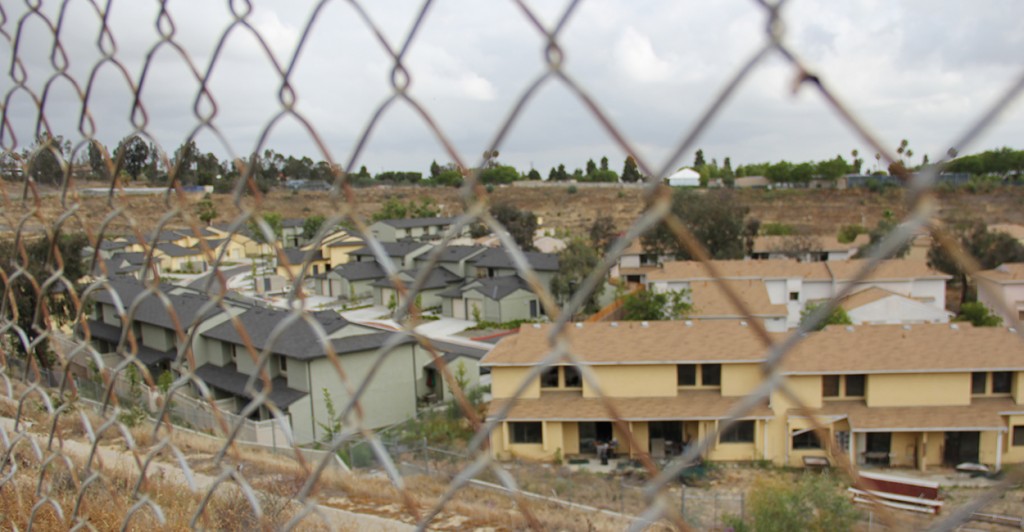
Blue Butterfly Village (left) and older homes in the neighborhood (at right) (Photo: Billy Glading/The Daily Signal)
For her part, Chavez lights up when discussing the relationships she’s fostered at Blue Butterfly in the short time she’s lived there.
“It’s a scary move altogether, going from living alone to living in a community with all these people,” she says. “Dealing with my PTSD as well as theirs, you wonder, ‘Am I going to get along with everybody? Am I going to handle it well?’ But me and my neighbors are very close. Our kids play on the playground, and we’re back and forth [to one another’s homes] all the time.”
Volunteers of America hopes to take the lessons they have learned from their pilot program to grow gradually. The next group of tenants will likely move into Blue Butterfly Village on July 1st. The community should be completely full by November 1.
“Now we have the tools needed [to scale],” Covington says, referring to Volunteers of America, but at the same time, serving as a metaphor for the women living within the community. “We have a really clear understanding of the process, and how we’re building our strategic plan [for expansion].”































